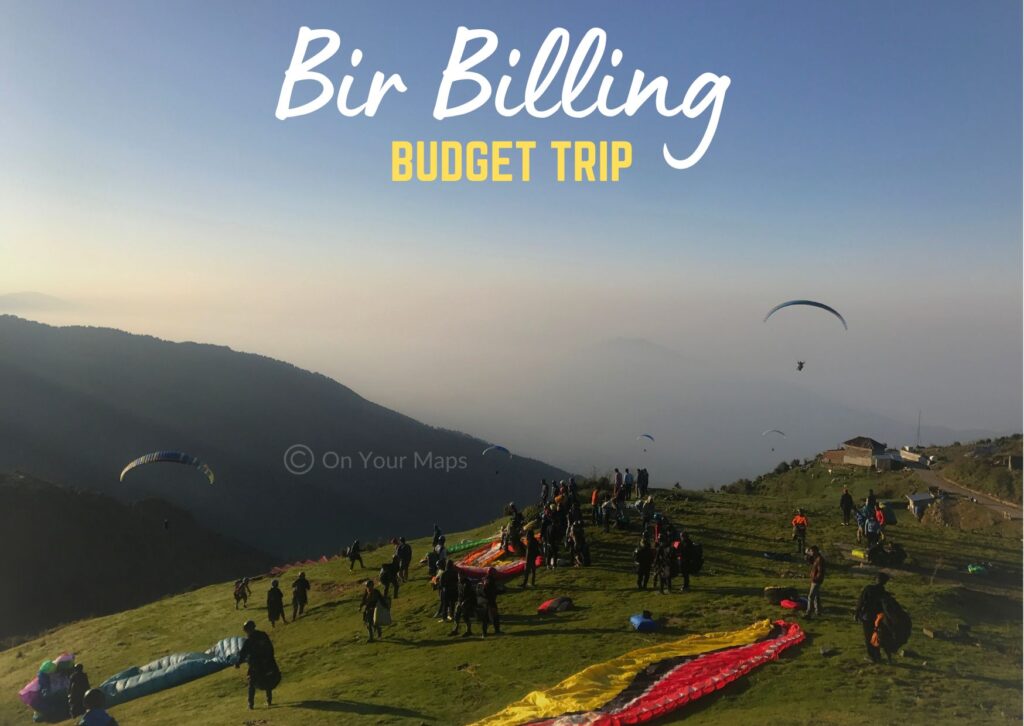
There are occasions in your travels when you end up discovering some unexplored gems, consciously or unconsciously. The trek to Tatwani hot spring was one such occasion on my trip to Bir Billing.
Here’s my comprehensive guide to Tatwani hot spring trek from Bir Billing.
ON YOUR MAPS… GET SET… GO!!
Himachal Pradesh is home to a number of hot water springs. Perhaps, not all of them are blessed with a breathtaking trek as Tatwani is.
Bir Billing has been a popular adventure destination among foreign nationals and they have carved several hiking and trekking trails in and around Bir Billing. One of these trails leads to Tatwani hot water spring.
Tatwani or Tatpani or Tatapani or Tattani, locals in Kangra use all these names to refer to the hot water spring in Baijnath (for the sake of consistency, I will stick to Tatwani in this article).
Tatwani hot spring is nestled amidst the Dhauladhar mountain range, about 15 kilometres away from Baijnath in the Kangra district of Himachal Pradesh.
How I found out about Tatwani hot spring
After spending three days in Bir Billing, and ticking off all the must-visit places there, I and three other friends I had made in my hostel in Bir, were looking for some exciting places to go nearby.
Upon inquiring with the locals, the name of Tatwani hot spring came up and we finalised it for the next day’s excursion.
How lengthy is the Tatwani hot spring trek
If you are starting from Bir, then the trek to Tatwani hot water spring will consume an entire day.
First you will have to reach Baijnath. From there, it will take about 45 minutes to reach Binwa hydel plant, which is some 10 kilometres away.
The actual trek starts from the power plant. After treading 2 kilometres or 2 hours up and down the forest, you will finally reach Tatwani hot spring.
How to reach Tatwani hot spring
The trek to Tatwani hot spring starts from Binwa hydro power station. But to reach the power station is a task in itself.
The power plant is very remotely located, with no access to public transport. The nearest place to the hydro power station that has public transport connectivity is Deol village.
Deol has bus services to and from Baijnath. But the frequency of buses on the Deol-Baijnath route is irregular and limited.
Even if you reach Deol by bus, the hydro station would still be about 10 kilometres away. So, reaching there via bus or public transport is simply unviable.
The best and most viable way to reach Binwa hydro power station is by a private vehicle.
One thing worth mentioning is the scenic landscapes that pass along the way from Baijnath to the power plant.
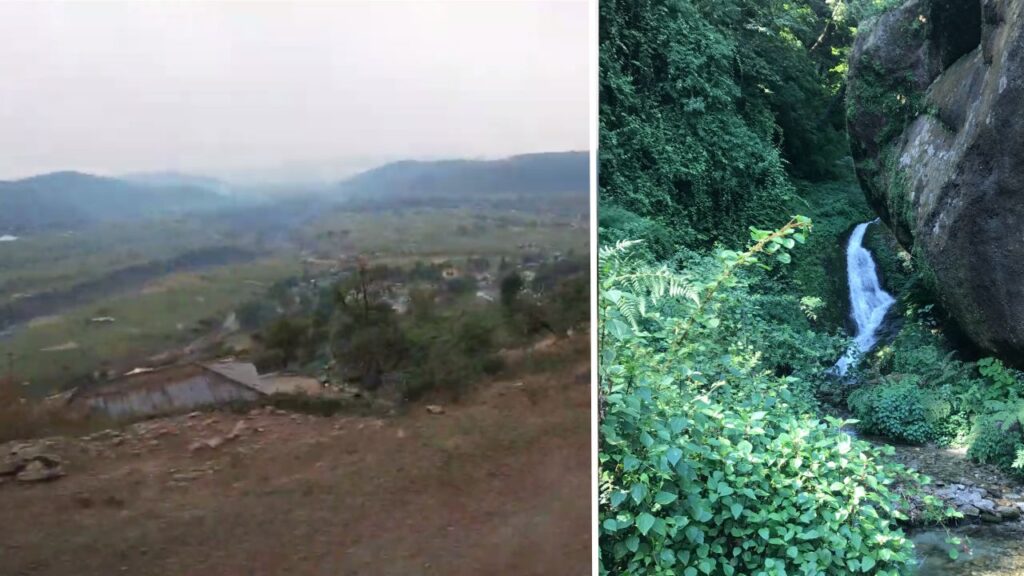
The road is narrow and poor, but the beautiful views of the farms and the mountains compensates for it. You will also cross waterfalls on the way.
The road will give you an apt teaser of the beauty of the trek that lies ahead.
Tatwani hot spring trek
After reaching the hydro power station, you start the trek as you walk through the narrow path that draws alongside the power plant.
The initial few metres of the trek, near the hydro plant, is a lane made of concrete. But it gets raw as you go ahead.
For a long way, the trail goes parallel with the pipeline of the hydro project.
The trail of the trek passes through untouched forest.
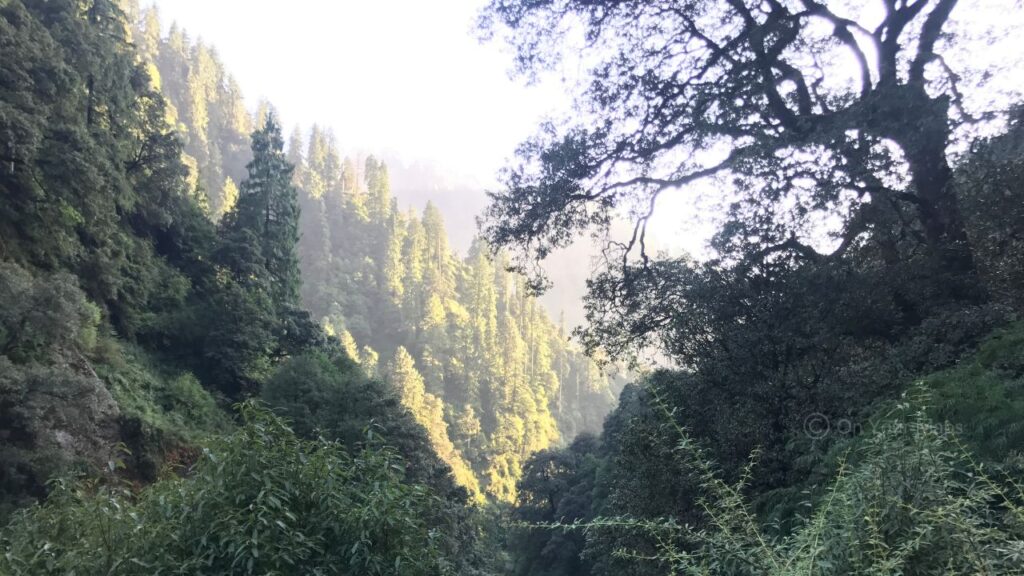
You will be amidst virgin nature and the philosopher inside you will be awakened.
I personally treat treks such as these as a detox therapy. The calming sounds of the jungle will help you hear the inner voice within you.
It will make you realise – how far you have come from the noise of urban life; how disconnected you are from the world outside (a little philosophical, I know!).
Yes, the pristinity of that place will evoke the philosopher inside you.
You will be amazed to realise how safely a place like this is tucked, away from the worldly evils. And it is all for you to embrace it.
However, we saw there were plans to develop the area to attract more visitors. There was a camping site in the works and another structure under construction to cater to tourists.

I feel fortunate to have trekked here while the place was still in its natural form. I am afraid to imagine how tourism will ruin this virgin forest in the coming years.
Check out other people’s experience of Tatwani hot water spring here.
Tatwani hot water spring
Deep inside the forests, after a two-hour long trek, we finally reached Tatwani hot water spring. It is a stream of hot water from the river Binwa.
After an exhausting trek, a bath in the hot water spring will rejuvenate your tiring body. (Do carry a towel)
While men can take a dip in the open pool, there is a separate enclosed structure for women to bathe.
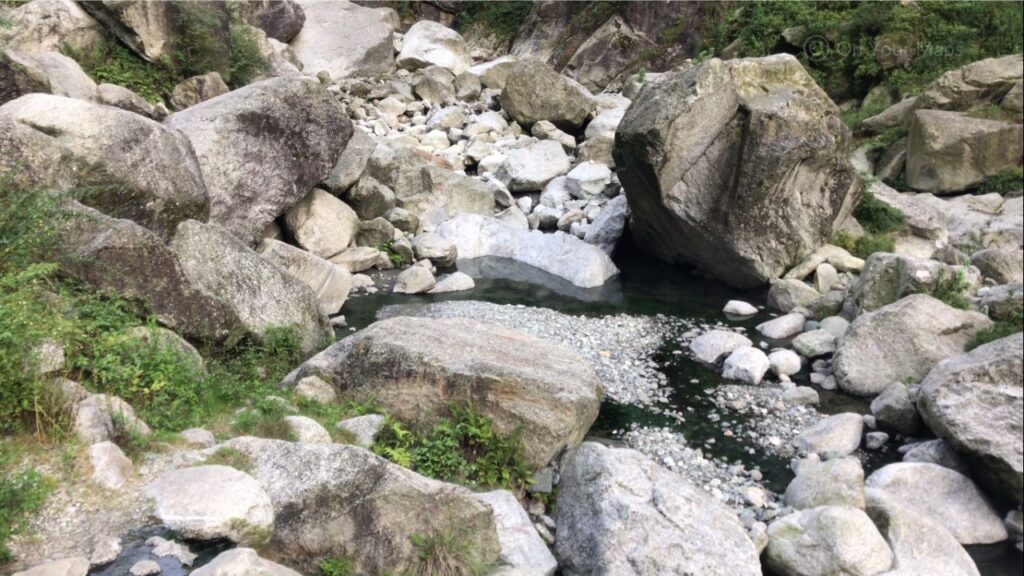
Because the springs are not adequately maintained, the pools are not clean and you will find layers of algae inside.
The spring gathers religious significance from the locals (many people throng to this spring during religious festivals to take a holy dip), because of which there has been some development around it.
You will find some unfinished buildings and a Shiva temple on the bank of the stream.
Many also believe that the natural sulphur in the hot spring has curing properties for ailments like joint-pain and skin disease.
I could not take adequate pictures for this blog post, therefore here’s a video which documents Tatwani hot spring trek quite succinctly:
Who can trek to Tatwani hot water spring?
Tatwani hot spring trek is about two-hours of exhausting climbing and descending in the forest hills. Anyone who is up for it should have good physical fitness and endurance levels.
This is not to discourage folks, but if you don’t have prior trekking experience, then you should only take up this trek in the company of an experienced person.
Important things to keep in mind (Don’t repeat the mistakes that we made!)
Clearly, the trek to Tatwani hot spring is an excruciating one. Unaware of its difficulty level, we embarked on it without any preparation, failing to anticipate the challenges the trek would present.
Learning from my own experience, I am listing down some key points that you must take care of before trekking to Tatwani hot spring, to have an enjoyable time there:
- The route from Baijnath to Binwa Hydel Plant is bumpy, muddy and unsafe. We rode there on rented scooters, which was risky given the narrow-curvy roads that we had to ride on. (To be honest, we didn’t know the route would be so challenging)
- Therefore, I would highly suggest you hire a cab for a safe journey and go there on a four-wheeler with a local and experienced mountain driver.
- Fill up the tanker of your vehicle. There are no petrol pumps after you leave Baijnath.
- Please be mindful that the area does not support any mobile network. To navigate your way to Binwa, you will have to ask for directions from the people you find on the way.
- Another mistake we made was to start the trek in the afternoon. By the time our trek concluded and we started our return, it was dark. We had to ride back on the dangerous road in the night hours, which was again very risky. Ideally, you should start early in the morning from Bir, and return before the sunset. Some people, however, camp there overnight too.
- As you would realise when you reach there, the area is very remote. You would cross very few passersby on the way and therefore you must have a guide or someone who knows the way.
- There are a few diversions on the way and you would not want to take the wrong path in a network-less jungle that is situated in the middle of nowhere.
- You should also know that the trek contains some steep and slippery rocks, so make sure you have good shoes on you.
- It will be helpful if you don’t carry any bag or belongings on the trek. It will be unnecessary baggage in an already difficult situation. Leave your bags in the vehicle at the power station.
- Be prepared to spot big insects (and even snakes) in the jungle.
One thing that annoyed us through the trek was the ever-increasing distance of Tatwani hot spring. Many passersby said that the hot spring is just a few minutes away, but even after walking for several minutes, we were not even close to the hot spring. This was really frustrating as we were becoming more and more exhausted.
The locals tell the distance as per their speed. Five-minute walk for them would be 30 minutes for us.
The trek, which we were told was of ‘15 minutes’, eventually turned out to be of two hours.
We also made the mistake of not carrying food and water with us, in the hope that we will find an eatery or a small maggi-point somewhere. BIG MISTAKE!
We did the excruciating trek with an empty stomach and thirsty throat. Either eat well before starting the trek, or carry food along with you.
The density of the forest here makes this trek avoidable in the monsoons. So it will not be a good idea to go on this trek during the rains.
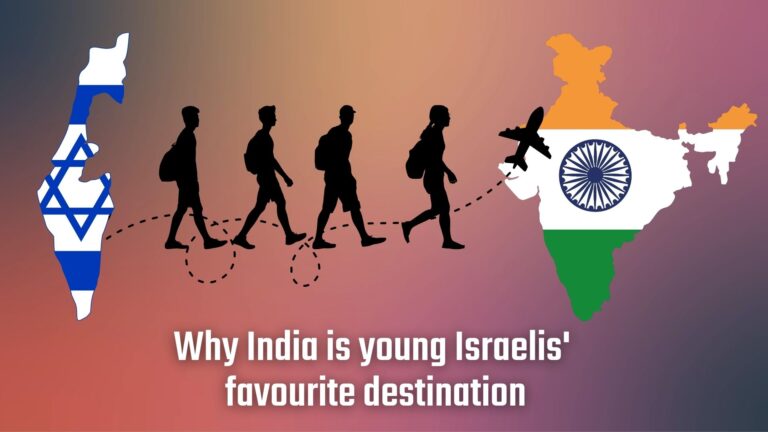
Why do so many young Israelis travel in India?
Seeing a large number of Israelis in places like Kasol, Pushkar, Kodaikanal, etc intrigued my curiosity. And I tried to understand what brings so many Israelis to India.
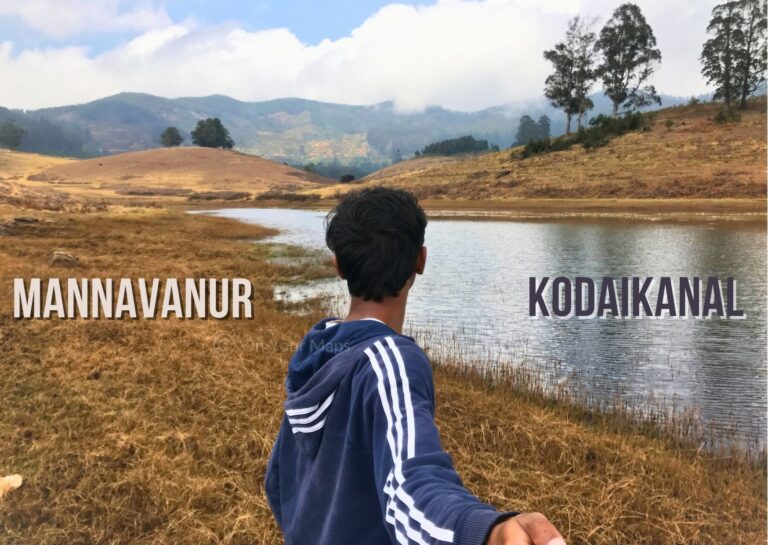
Mannavanur Lake and Kodaikanal: My budget travel in under Rs 3,000
Mannavanur Lake and Kodaikanal will change your outlook of South Indian hill-stations.

